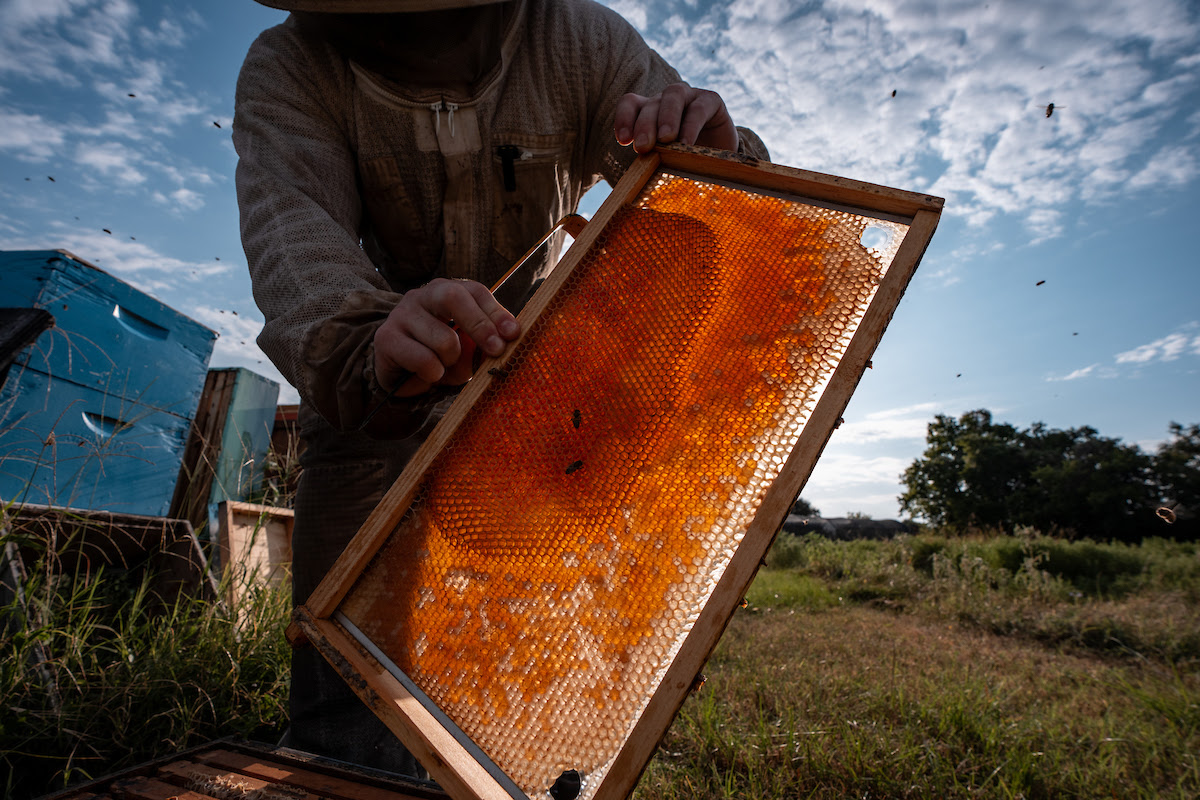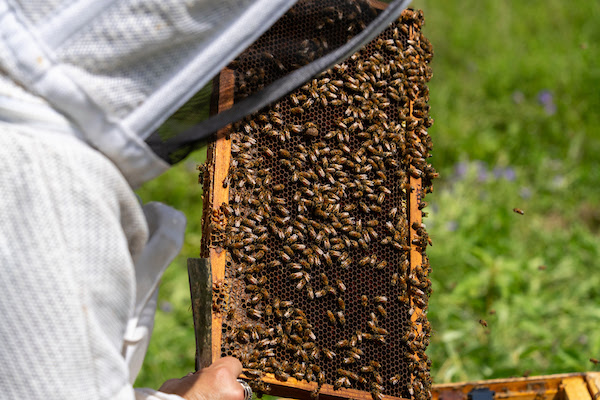Good moisture in late-spring and early summer translated into better foraging opportunities for bees compared to recent years.
“Nectar dearth (in East Texas) typically occurs in early July; this is when there is a scarcity of nectar to feed the bees,” added Slater who leads the statewide Texas Master Beekeeper Program and is based at the Texas A&M AgriLife Research and Extension Center at Overton.
“However, this year, the dearth took place approximately two weeks later than in the past.”
 Texas beekeepers experienced a bounce back year when it comes to honey production despite significant hive losses. (Courtney Sacco/Texas A&M AgriLife)Honey yields climb across Texas
Texas beekeepers experienced a bounce back year when it comes to honey production despite significant hive losses. (Courtney Sacco/Texas A&M AgriLife)Honey yields climb across Texas
According to the honey report published by the U.S. Department of Agriculture National Agricultural Statistics Service, Texas beekeepers produced over 4 million pounds of honey in 2024, compared to 3.8 million in 2023.
Across the state, producers from both commercial and hobby operations have reported a better honey harvest than last year. Slater said timely rains earlier in the season played a major part in the improved honey production.
Texas bee colonies averaged 46 pounds of honey with an average price of $2.24 per pound, according to the report. Slater encourages consumers to support Texas beekeepers by looking for the Real Texas Honey seal when shopping.
Nationally, honey production resulted in a yield of 134 million pounds. However, this was down 4% in 2024 compared to the previous year.
According to a statewide survey of more than 400 beekeepers, hive losses were more significant than expected.
“We had extraordinarily high losses last year compared to years past,” Slater said. “Across the state, about 50% of hives were lost.”
Slater said this loss rate is on par with the rest of the nation, with about 1.2 million colonies lost in the U.S. within the past year.

Honey bee research at the Janice and John G. Thomas ’59 Honey Bee Facility and by specialists at sites around the state, including Garett Slater, Ph.D. in Overton, continues to investigate solutions to challenges faced by Texas beekeepers. (Courtney Sacco, Michael Miller/Texas A&M AgriLife)Impacts of hive loss in Texas
Slater said colony losses were caused by several factors, but that Varroa mite infestations were a significant challenge.
“Varroa mites feed on honeybees and transmit viruses throughout the hive,” Slater said. “One obstacle that is more prevalent this year compared to years past is the parasite’s resistance to amitraz, the chemical used to treat infested hives and kill Varroa mites.”
Slater said educational programs and resources are helping producers combat this obstacle. Since last year, AgriLife Extension added beekeeping specialists to support and educate Texas beekeepers on issues impacting hive health.
“AgriLife Extension programs like the Texas Master Beekeeper program equip producers not only with the ability to identify why their bees are dying, but also how to address problems before they end in colony collapse,” he said.
Slater also added that AgriLife Extension researchers launched a honey bee breeding program focused on Varroa mite resistance, with the goal of reducing hive losses for Texas beekeepers. Texas serves as a vital asset to the U.S. bee industry, producing nearly 30% of queens nationwide.
Begin your beekeeping journey
Ready to start your own backyard bee colony? Learn the essentials you need to start and put yourself on the path to become a master beekeeper.
For more resources including photo repository, logo downloads and style guidelines, please visit the Resources for Press and Media.
